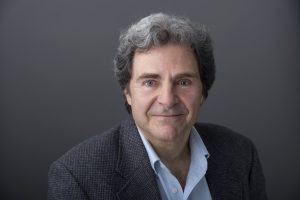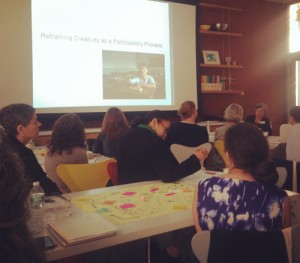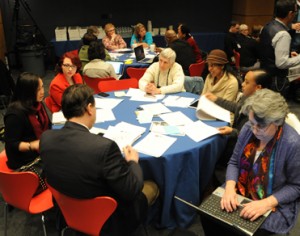“I’m working with a student whose drawings always depict someone getting shot or stabbed. What should I do?”
“The other day, a student told me that he’s thinking about coming out to his parents and he’s scared about how they’ll respond. I’m not sure what to tell him.”
“I think that one of my students may be homeless right now. Should I ask her about it?”
“One of the students in my class gets really angry and tearful any time that someone critiques his work. How can I help him and the other students handle critiques?”

In our work with youth, we encounter difficult issues on a weekly, if not daily (or hourly), basis. Working with students means dealing with situations that we may never have previously encountered. It means asking the question: “What should I do?” on a regular basis. Sometimes, the issues that students bring to us don’t seem to have an answer. In these situations, two heads are most always better than one. Consulting with colleagues can help guide your next steps and allow you to talk through an issue to gain a better understanding of it.
To help support students and staff, many schools have brought in behavioral health specialists, such as social workers, psychologists, and counselors. Depending on their areas of expertise, these specialists may be able to provide support in a number of areas, including:
- Student behavioral health concerns (ex. depression and suicidal ideation, anxiety, trauma exposure, etc.)
- Accessing local resources (ex. immigration services, family and child services, education advocates, etc.)
- Crisis management (ex. addressing abuse/neglect concerns, providing support after trauma exposure, etc.)
- Building social-emotional support systems (ex. helping develop structures and policies for helping staff address student’s behavioral health needs.)
How can after-school programs access support in addressing students’ behavioral health needs?
Last year, I began thinking about this question with the staff of Fast Forward, a teen program at the Institute of Contemporary Art, Boston (ICA). They have developed an education team that is passionate and knowledgeable about what they do, as well as highly engaged with and supportive of their students. As their programming has expanded and students have developed deeper relationships with staff, more issues that students are facing have come to the surface. To address these complex issues, the ICA reached out for a behavioral-health perspective.
Now, once every few weeks, the ICA education staff and I sit down together to discuss current concerns that they are facing in their work with students. Our conversations range from the staff’s work with individual students to issues around systems and policies. To give an example, three issues that we discussed in a recent meeting include:
- A number of students were exposed to a violent incident in the community. How might the students respond to this event? What are typical responses to trauma exposure? When should staff be concerned about a student’s response and what should they do if they are concerned?
- A student told a staff member that she was having suicidal thoughts. What next steps should the staff member take? What could the staff member have said when the student brought this up to her? What are signs of depression and suicidal ideation that staff can look out for?
- One student has missed class for two weeks in a row. What is the ICA’s official policy around absences? Is it better to contact the student directly or to contact the student’s parents?
For each issue, we discuss the concern, think about the context of the issue, and consider possible ways to address it. We develop concrete next-steps for each problem and make sure to check in during the following weeks to determine whether any further steps are needed.
Our goal, in the partnership, is to support the education staff in their immediate work, as well as to build the team’s capacity for supporting their students’ social-emotional needs in the future. We supplement the meetings with phone calls and emails to address crisis situations, occasional trainings to develop skills that the staff would like to strengthen, and collaboration to build policies around supporting students. This work allows the education staff to focus on the mission of the ICA’s programming while also ensuring that they are meeting the needs of their students.
Have your staff faced issues that they are unsure how to address? Would a behavioral-health perspective be helpful in addressing your participants’ needs? If so, consulting with a social worker, counselor, or psychologist might be something to explore.
Melissa Rocklen is a clinical social worker and an artist. As a social worker, she has focused on working with students, families, and staff within the Boston Public School system. She has conducted individual and group therapy, taught lessons on social-emotional skill building, assisted people in accessing local resources, provided trainings for teachers, and built protocols for addressing student needs.
 On the Mass Cultural Council’s podcast, Creative Minds Out Loud, we recently spoke with Eric Booth about the potency of teaching artistry.
On the Mass Cultural Council’s podcast, Creative Minds Out Loud, we recently spoke with Eric Booth about the potency of teaching artistry.



 Guided by the question of how can we foster creative capacity in our children?, the
Guided by the question of how can we foster creative capacity in our children?, the 